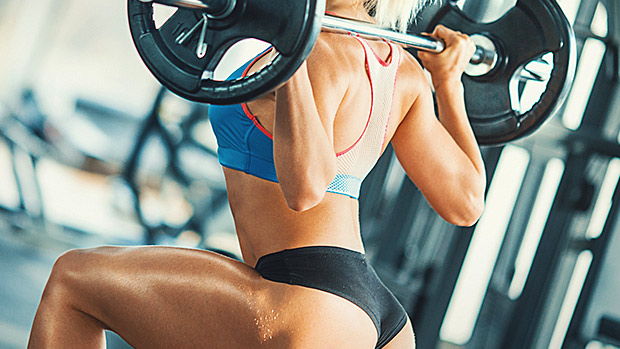It's not a stretch to say that many women, despite all evidence to the contrary, still fear that weight training will give them large, "bulky muscles." As a result, women often strive for the mythical, unicorn-ish attribute of "muscle tone" while using sub-threshold weights (too light to elicit an optimal remodeling effect in muscle).
One study even pegged an exact number to those sub-threshold weights, finding that women who trained alone self-selected weights that were about 57% of the weight they could lift for one rep (1RM) (Cotter, et al. 2017).
This 57% number culminated in sets that the women rated as "somewhat hard," and that partly explains why a lot of women don't make much progress in the gym, but the problem may not be so much the amount of weight they use, but the amount of effort they put into their sets.
This fear of bulkiness often leads to relatively low-effort workouts and that goes a long way in explaining why a lot of women rarely morph into the swimsuit goddess they aspire to be.
Things probably aren't going to change, though, until someone manages to purge these women of the idea that lifting, or more specifically, lifting heavy (-ier) weights or working harder is going to make them all bumpy and gnarly like their Aunt Stella who worked on the docks.
One group of researchers recently did a study on the subject, though. They found that it didn't matter if women worked with heavy weights or medium weights as long as they do it with a certain degree of teeth-clenching effort.
Both approaches led to modest but favorable changes in body comp (less fat, increased strength, and slightly more rounded muscle bellies), while neither approach led to them looking anything remotely like the pimply-backed, fireplug of a guy you see in nearly every gym in America, back there in the dark, musty corner, squatting 500 pounds for multiple reps and whose biceps are larger than his head.
Researchers from Coastal Carolina University recruited 20 female students and divvied them up into two groups. Each group trained upper body twice a week and lower body once a week for 8 weeks.
One group trained with relatively heavy weights and did 6-7 exercises for sets of 5 to 6 reps (over 85% 1RM). The other group did the same amount of exercises but trained with lighter weights, doing sets of 10-12 reps (50 to 70% of 1RM). All test subjects worked to momentary failure on each set.
Both the heavy and lighter groups attained similar increases in lean body mass (more so in the lower body than the upper body, though), thigh cross sectional area, vertical jump, chest pass velocity (with a medicine ball), back squat maximum, and overhead press. Likewise, both groups lost significant amounts of body fat.
Even so, the gains were modest, with test subjects gaining a little size in thigh cross-sectional area and hardly any in their upper body.
The researchers concluded that the "the data obtained in this study also serve to further debunk some of the myths that may otherwise impede young women from strength training, including a fear of excessive hypertrophy."
- Women should use weights of at least 50% of 1RM to favorably change their body composition, but that may need to be re-addressed as they lose their novice status (they may need to use heavier, more challenging weights).
- Using 50% of 1RM might be useless, though, unless women train, at least a good percentage of the time, to momentary failure – to the point where they can't perform another rep. To do this, women need to lose the fear of "making ugly face." (Personally, I almost never see women grimace in the gym. They should try to overcome their fear of looking unfeminine, at least for a couple of instantly forgotten seconds.)
- Regardless of whether they train with lighter weights for high(er) reps or heavier weights for low(er) reps, it's not going to make them "bulky," at least without undertaking drastic increases in training volume, intensity, and complexity with appropriate dietary changes (more calories and more protein).
- For optimal results, women should adjust their protein intake to roughly 2.0 grams per kilogram of bodyweight. This is good advice for women who simply want to have a beach bod, or who ultimately want to gain an appreciable amount of muscle mass.
Note: The researchers in this study didn't make changes to the test subjects' diets, but they did monitor them. They found that their protein intake was low, falling well short of the NSCA recommended 2 grams per kilogram. More energy intake, i.e. calories, along with additional protein would likely have made the muscle growth more "robust."
- Cholewa JM et al. The Effects of Moderate- Versus High-Load Resistance Training on Muscle Growth, Body Composition, and Performance in Collegiate Women. J Strength Cond Res. 2018 Jun;32(6):1511-1524.




